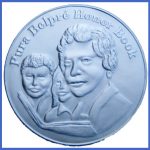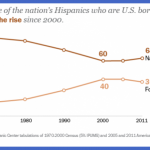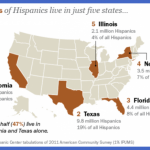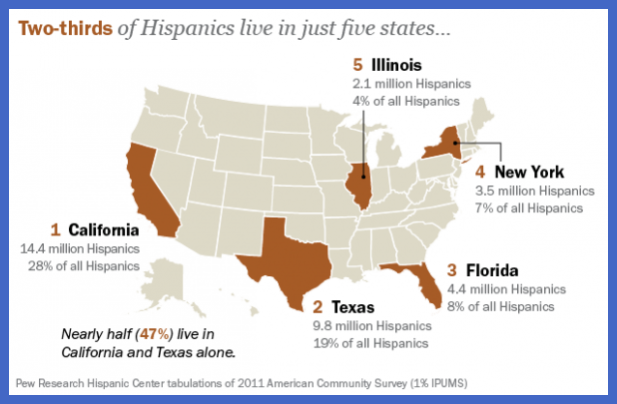Parsons, Lucy (c. 1853-1942). Activist Lucy Parsons identified herself as an African American woman of Native American and Mexican descent. Parsons was an activist who stood up for the rights of poor people and workers for nearly 70 years. The Chicago Police Department described her as more dangerous than a thousand rioters. Parsons married in 1870 and in 1873 came to Chicago, where she worked with unions and organized workers. Parsons led many workers on strike against poor working conditions. Parsons continued her activism until her death at 89 years old. In May
2004, Chicago Park District’s board named a Chicago park at 4712 West Belmont Avenue after Parsons, notwithstanding strong opposition from local police union.79
Torriente, Cristobal (1893-1938). Baseball player Torriente was born in Cienfuegos, Cuba. He played as a center fielder for the Chicago American Giants from 1918 to 1925. In 2006 the Special Committee elected him to the National Baseball Hall of Fame.80
Bithorn, Hiram (1916-1951). Puerto Rican who was drafted by the Chicago Cubs in 1942. Many consider Bithorn to have been the first to break the color line.
Hernandez, Irene C. (1916-). Hernandez was the first Latino elected to office when she became a member of the Cook County Board in 1974, representing the county’s 7 million residents.81
Silva, Rufino (1919-). Rufino Silva was born in Puerto Rico and studied at the Chicago Art Institute from 1938 to 1942 on a fellowship from the Puerto Rican government. Silva taught at Milwaukee’s Layton School of Art between 1946 and 1947. In the subsequent years Silva studied abroad, and upon his return he joined the faculty at the Chicago Art Institute, where he stayed until his retirement.82
Talip, Alfredo (1925-). Talip was born in San Fernando Tamalipas, Mexico, and he came to the United States in 1942. Talip has been one of the most involved political activists of his generation. His love for politics was spurred when his good friend Jack
John F. Kennedy campaigning in Aurora, Illinois, with Alfredo Talip, one of Kennedy’s strongest supporters and campaign volunteer. Talip is in a white hat standing directly under Viva Kennedy Club poster (1960). Courtesy of the Alfredo Talip Family, Aurora, Illinois.
Hill ran for president of the AFL-CIO union. Talip later supported Hill’s bid for state representative. He has been described as someone who has given to the Latino community unselfishly through his service and personal assets. In 1956, three years before becoming a legal resident alien, he was a volunteer driving people to polling places throughout the city of Aurora, and he continues this service to this day. In 1960 Talip helped establish a fraternal organization, the Latin American Club, whose purpose was to provide a place for Latino social events and a forum to raise the consciousness of Latino issues. He was a volunteer for President John F. Kennedy’s campaign, and he has worked on voter registration drives. In 1970 Talip became a United States citizen, and he was proud that he could vote and affect the future of his family, community, and new country.
Ramirez, Mirta (1928-). The first executive director of ASPIRA Inc. of Illinois, Ramirez set up the country’s first bilingual program in public schools. She also founded the West Side Child Parent Bilingual Center, the first agency of its type in the nation.
Jordan, Hector (1931-1970). Jordan was the first Latino to become a police officer in Aurora, Illinois, initially meeting with prejudice because of his Mexican heritage. During his tenure on the police force Jordan received many city commendations and was named Policeman of the Year. Later Jordan worked for the Federal Bureau of Narcotics and Dangerous Drugs (D.E.A.) and accepted a position with the D.E.A in Madrid, Spain, where he was murdered while off-duty. The Hispanic Illinois State Law Enforcement Association created the Hector Jordan Memorial Award.83
Gonzalez, Jose (1933-). Born in Iturbide, Nuevo Leon, Mexico, he has been a leader of the muralist movement in Chicago since the early 1970s. He devoted himself to the Chicano movement as a muralist, organizer of exhibitions, and founder of organizations such as Movimiento Artistico Chicano (MArCh) throughout the 1970s and 1980s. He graduated from the School of the Art Institute of Chicago in 1970 and received a master’s of fine arts from the University of Notre Dame in 1971.84
Orozco, Raymond E. (1933-). Orozco was born in Chicago, joined the Chicago Fire Department in 1959, and rose through the ranks to become the head of the Chicago Fire Department. In 1979 he became battalion chief, in 1980 deputy district chief, and in 1981 executive assistant to the fire commissioner. On April 24, 1989, he became fire commissioner, retiring in 1996.85
Aparicio, Luis (1934-). Aparicio was born in Maracaibo, Venezuela, and played shortstop for the Chicago White Sox (1956-1962, 1968-1970). Aparicio led the American League in stolen bases for nine consecutive seasons, from 1956 to 1964. He won the Golden Glove Award eleven times, was named to eight All-Star teams, and was inducted into the Baseball Hall of Fame in 1984, 11 years after he retired. The White Sox retired his jersey number, No. 11.86
Welch, Raquel (1940-). The actress, a major sex symbol of the 1960s and 1970s, was born Jo Raquel Tejada, in Chicago. Welch’s resume includes over 45 films. Her father Armando was a Bolivian migrant and aerospace engineer.
Lopez-Rivera, Oscar (1943-). Community activist Lopez-Rivera is serving a 70-year prison sentence for seditious conspiracy, which included the bombing of 28 targets in the
Chicago area. Lopez-Rivera was also involved in the Chicago Puerto Rican Riots of 1966. He is a founding member of the Rafael Cancel Miranda High School, now known as the Pedro Albizu Campos High School and the Juan Antonio Corretjer Puerto Rican Cultural Center. He was also active in the Northwest Community Organization (NCO), ASSPA, ASPIRA, and the 1st Congregational Church of Chicago. He helped to found FREE, a halfway house for convicted drug addicts, and ALAS, an educational program for Latino prisoners at Statesville Prison in Illinois. He is expected to be released in 2027.87
Andrade, Juan (1947-). Andrade heads the Chicago-based United States Hispanic Leadership Institute (USHLI). He is one of only two Latinos to receive the Presidential Medal for the performance of exemplary deeds to the nation, which was presented to him by President Bill Clinton. Andrade received a PhD from Northern Illinois University, and a post-doctorate MA from Loyola University in Chicago. Now a weekly columnist for the Chicago Sun Times, he was a political commentator on ABC-7 television channel and on WGN radio, being the only Latino commentator in the nation appearing on English-language radio or television. Andrade has helped register more than 1 million new Latino voters throughout the United States. As a civics teacher just out of college, Andrade was arrested in his home state of Texas for teaching his students about the fundamentals of U.S. Democracy in his native tongue, Spanish, which then was a violation of state law.88 The American G.I. Forum of Illinois named Andrade Man of the Year.89
Morton, Carlos (1947-). Morton was born in Chicago and is the most published Latino playwright in the United States. Morton’s first book of poems, entitled White Heroin Winter, was published in 1971. His most famous play, El Jardin (The Garden), was published in 1974. He received a PhD degree in drama from the University of Texas in 1987. Morton’s plays appear mainly in two collections, The Many Deaths of Danny Rosales and Other Plays (1983) and Johnny Tenorio and Other Plays (1991).90
Torrado, Rene (1947-). Torrado was the first Latino president of the Chicago Bar Association. He served as its general counsel from 1988 to 1995, and as its president in 1995 and 1996. Torrado currently chairs the CBA’s Appellate Review Committee of the Judicial Evaluation Committee. In addition, Torrado is listed in the 2003-2004 edition of The Best Lawyers in America.91
Villa-Komaroff, Lydia (1947-). Dr. Villa-Komaroff, a physician, was employed at Northwestern University in Evanston, Illinois, as a professor of neurology and associate vice president for Research Administration. She later was appointed as vice president for Research. Some of Villa-Komaroff’s career highlights include creating nine new research centers, the Office of Strategic Initiatives, and the Office of Clinical Research and Training. In 1998 Villa-Komaroff gained international recognition as a pioneer in the field of cloning and became faculty at Harvard University Medical School. Villa-Komaroff was also a founding member of the Society of the Advancement of Chicanos and Native Americans.92
Venegas, Aurora V. (1949-). Venegas is president of Azteca Supply Company, which is among the strongest and best-respected minority- and female-owned businesses in Illinois. Azteca supplies a variety of products and services of high quality, and it is a preferred supplier to its customers. Venegas actively supports such organizations as HACLA,
the Illinois Hispanic Chamber of Commerce, and the Federation of Women Contractors. She gives back to the community by supporting the Boys Club, the Special Olympics, Hitzaba House, Pope John Paul II School, Alivio Medical Center, and Mujeres Latinas en Accion. She is a board member of Father Flanagan’s Girls and Boys Town in Chicago.93
Del Valle, Miguel (1951-). Del Valle was the first Latino elected to the Illinois State Senate. He also became the first Latino ever to be appointed as City Clerk of Chicago by Mayor Richard M. Daley. Senator del Valle is the founder of the Illinois Association of Hispanic State Employees (IAHSE). He also cofounded numerous other Latino organizations, including the Illinois Legislative Latino Caucus, of which he is a cochair; the Illinois Latino Advisory Council on Higher Education (ILACHE); the Alliance of Latinos and Jews; the Illinois Hispanic Democratic Council (IHDC). He also developed the annual Department of Children and Family Services Hispanic Families Conference.94
Lozano, Rudy (1951-1983). Lozano was a community activist and the Midwest director of the International Ladies Garment Workers Union. Lozano arrived in Chicago with his family in the early 1950s and settled in Pilsen, a largely Mexican neighborhood. Lozano was on Mayor Harold Washington’s transition team, whose goal was to unite Latinos and African Americans. He was also an organizer of the Independent Political Organization’s Near Westside Branch. Lozano was murdered in his home, and in 1989 the Chicago Public Library opened its Rudy Lozano Branch.95
Maldonado, Roberto (1951-). In 1994 Maldonado was elected Cook County Commissioner, making him the first Puerto Rican in the nation to serve as a county commissioner. In this capacity, Maldonado is chairperson of the Stroger and Cermak hospitals, and of the Law Enforcement and Corrections Committee. Additionally, he serves on nine committees: Business and Economic Development; Contract Compliance; Labor; Real Estate; Department of Corrections; Health and Hospitals; Finance; Zoning and Buildings; and Roads and Bridges. Maldonado earned both his undergraduate and his master’s degrees from the University of Puerto Rico, before heading north to Chicago. In Chicago, Maldonado continued his education at Loyola University, where he earned his PhD in clinical psychology.
Martinez, Oscar (1952-). Martinez is the founder of the Latin American Museum of Art in Chicago. He was appointed chair of Media Arts of the Illinois Arts Council. Martinez was also president of the Latino Institute of Chicago. He received a BS in medical art from the University of Illinois Medical Center. Martinez was born in Ponce, Puerto Rico, and currently resides in Chicago.96
Castillo, Ana (1953-). Author Castillo was born and raised in Chicago, Illinois. She earned her master’s degree in Latin American and Caribbean studies from the University of Chicago. In 1991 she received her doctorate in American studies from the University of Bremen in Germany. In lieu of a traditional dissertation, she submitted essays later collected in her highly acclaimed work Massacre of the Dreamers.97
Gutierrez, Luis (1953-). In 1992, Gutierrez became the first Latino from the Midwest elected to Congress. By receiving 77 percent of the vote, he was able to win the 4th U.S. Congressional District seat. He received a BA from Northeastern Illinois University in 1974, and he worked as a social worker and teacher before being elected 26th Ward
Alderman to the Chicago City Council. In a survey of Hispanic voting patterns released in late 1999, Congressman Gutierrez was selected as the single leader most admired by Latino voters nationwide. The poll was commissioned by Univision, a nationwide Spanish-language television network.98
Martinez, Iris (1953-). Martinez is the first Latina in Illinois to be elected to the State Senate. She passed legislation that obligates health insurance companies to provide women with contraceptive coverage. In recognition of this legislation, Martinez received the Profile in Courage Award from Planned Parenthood. With the passage of yet another law Martinez targeted Illinois drivers with out-of-state reckless homicide and DUI convictions. This law ensures that convictions received in other states are not only included in Illinois driving records but also subject to state laws regarding further prosecution of these offenses. To help protect consumers from becoming victims of identity theft, Martinez helped pass a law requiring that all insurance cards be issued without a Social Security number.99
Cisneros, Sandra (1954-). Author Cisneros’s first book of fiction, The House on Mango Street, was awarded the American Book Award by the Before Columbus Foundation in 1985. She received a Paisano Dobie Fellowship in 1986 and a second National Endowment for the Arts Award in 1988. Cisneros was awarded the Lannan Literary Award for fiction in 1991, an honorary doctor of literature degreed by the State University of New York at Purchase in 1993, and was named a MacArthur Fellow in 1995.100
Gonzalez, Michael W. (1955-). Gonzalez is chief executive officer of Maestros Ventures LLC. A licensed professional engineer, he was also cofounder and executive vice president of Primera Engineers Ltd and cofounder and president of Primera Hill, an affiliate of Primera Engineers. Gonzalez exemplifies Primera’s commitment to the community by actively serving on the boards of Window to the World Communications Inc., the parent company of WTTW Channel 11 and WFMT 98.7; Latinos United; and ACE Technical Charter School. He also served two terms as president and more than 11 years as a board member of the Hispanic American Construction Industry Association. Gonzalez is treasurer of the Illinois Legislative Latino Caucus Foundation.
Delgado, William (1956-). Senator from the 2nd Legislative District, Delgado was born in Newark, New Jersey, but was raised in Chicago. He graduated from Tilden High School and Northeastern University, where he earned a bachelor’s degree in criminal justice, with a minor in sociology. Delgado was first elected in 1998, and his top legislative priorities are education reform, economic development, and crime prevention. He is working to develop school safety initiatives to keep drugs and guns out of local classrooms. Delgado also supports reducing class sizes, improving classroom discipline, and increasing state support for school construction grant funding. Delgado also highlights his work as champion of health and physical fitness issues. He has sponsored legislation to see that physical fitness is emphasized in schools statewide. Representative Delgado serves on seven committees: Appropriations for Elementary and Secondary Education; Fee for Service Initiatives; Human Services; Judiciary II-Criminal Law; KidCare; Managing Sex Offender Issues; and Registration and Regulation. William Delgado was appointed Illinois state senator by the former state senator Miguel del Valle.101
Hinojosa, Mark (1956-). Hinojosa has been the director of photography for the Chicago Tribune since 1994. Mr. Hinojosa is in charge of over 67 staff members, including photographers, photo editors, assignment editors, and lab personnel. In 1997, under the direction of Hinojosa, the Tribune’s photo department was awarded third place for best use of pictures in a newspaper. This was the very first time the newspaper had been recognized for this honor.
Mora, Antonio (1957-). The first Latino to serve as a main anchor in a mainstream Chicago network-owned station. Mora was born on December 14, 1957, in Havana, Cuba. Mora has worked as a news anchor at WBBM-TV in Chicago since 2002. Previously, Mora had worked at ABC as a news anchor for Good Morning America.102
Perez, Antonio (1962-). Perez was a full-time photographer for jExitol, which is the Spanish-language publication in the Chicago Tribune. He currently works full time for the Chicago Tribune. He contributes photographs to several publications and has a private collection in the Museum of Contemporary Photography, at the Chicago Art Institute, as well as in the Stuart Baum Gallery.
Grillo, Fernando E. (1963-). Grillo was the head of the Department of Financial and Professional Regulation, making him the first Latino cabinet secretary in state history. Throughout the 1990s, he worked in public finance, serving as vice president of public finance for Samuel A. Ramirez & Co. Inc. from 1995 to 2000, and assistant vice president of public finance for Estrada Hinojosa & Company Inc. from 1993 to 1995. He worked in several capacities for the City of Chicago in the Department of Consumer Services, the Park District, and the Department of Housing between 1986 and 1992. Grillo grew up in Chicago’s Logan Square neighborhood. He earned a bachelor’s degree in history from Andrews University in Berien Springs, Michigan, and a law degree from John Marshall Law School. He is a member of the Puerto Rican Bar Association, the Puerto Rican Chamber of Commerce, and the Board of the Chicago Children’s Advisory Center.103
Montes, Jorge (1963-). The first Latino chair of the Illinois Prisoner Review Board, Montes was nominated by Governor Rod Blagojevich and approved by the State Senate. The Illinois Prisoner Review Board is an independent entity that makes decisions on adult and juvenile prison inmate matters. One of the roles of the Prisoner Review Board is to make confidential recommendations to the governor on clemency petitions.104
Perez-Luna, Victor (1963-). Perez-Luna is an assistant professor of chemical and environmental engineering at the Illinois Institute of Technology. He is a member of the team of research scientists who have developed a new sensing device called the IIT ChemArray, which can detect and measure the presence of toxic agents in air, water, and food.
Lopez, Paul J. (1964-). Lopez is senior vice president and chief lending officer of Park Federal Savings Bank of Chicago. A banker for 24 years, Lopez’s primary focus is neighborhood revitalization and community development. Born and raised in Chicago’s Back of the Yards neighborhood, Mr. Lopez serves on Father Flanagan’s Girls and Boys
Town of Chicago, Peace and Education Coalition of Back of the Yards, New Alliance Task Force, the Illinois Attorney General’s Latino Advisory Council, Neighborhood Housing Services of Chicago, and many more. Lopez played a vital role in opening the first full-service bank branch in an Illinois high school, and he was honored by the City of Chicago for his relief efforts for the victims of Hurricane Katrina. Lopez serves as vice chair of the Illinois Legislative Caucus Foundation.
Osorio, Jose M. (1964-). Osorio has been employed as staff photographer at the Chicago Tribune since 1991. He has worked on many special projects, and he was awarded the 1997 Baseball Hall of Fame Feature Picture of the Year.
Gonzalez, Ramiro (1968-). Gonzalez became the first Latino town president of Cicero, a Chicago suburb made famous by Al Capone. His predecessor, Republican Betty Loren-Maltese, vacated the post to serve an 8-year prison term for bilking the town out of $12 million. Gonzalez moved with his family from Jalisco, Mexico, when he was 6 years old. He served on the Chamber of Commerce board and helped represent the U.S. Hispanic Chamber of Commerce at the local chamber.
Sosa, Sammy (1968-). In 1992 baseball player Sammy Sosa joined the Chicago Cubs, where he became an All-Star. In 1998 Sosa and Mark McGwire surpassed Roger Maris’s record of 61 home runs. In that same year Sosa became known as Slammin’ Sammy and won the Most Valuable Player Award. The next year, Sosa hit over 60 home runs in two seasons.
Lopez, Edwardo (1984-2006). Lance Corporal Edwardo Lopez was born in Aurora, Illinois, and graduated from high school in 2003. He enlisted in the Marines in 2004, and he was stationed and trained in Hawaii. Within four months, Lopez was deployed to Afghanistan for nine months. Lopez was a trained sniper for the U.S. Marines. Upon his return, Private Lopez was promoted to lance corporal. Shortly thereafter, Lopez was able to spend four months with his family in Aurora, Illinois. Lopez was recognized for being one of the best in his field. He was deployed to Iraq on September 8, 2006, and he was killed on October 19, 2006, in the Al Anbar Province of Iraq. Lopez was the recipient of a Purple Heart medal.
Illinois notable latinos Photo Gallery
Maybe You Like Them Too
- The Best Cities To Visit in The World
- World’s 10 Best Places To Visit
- Coolest Countries in the World to Visit
- Travel to Santorini, Greece
- Map of Barbados – Holiday in Barbados







